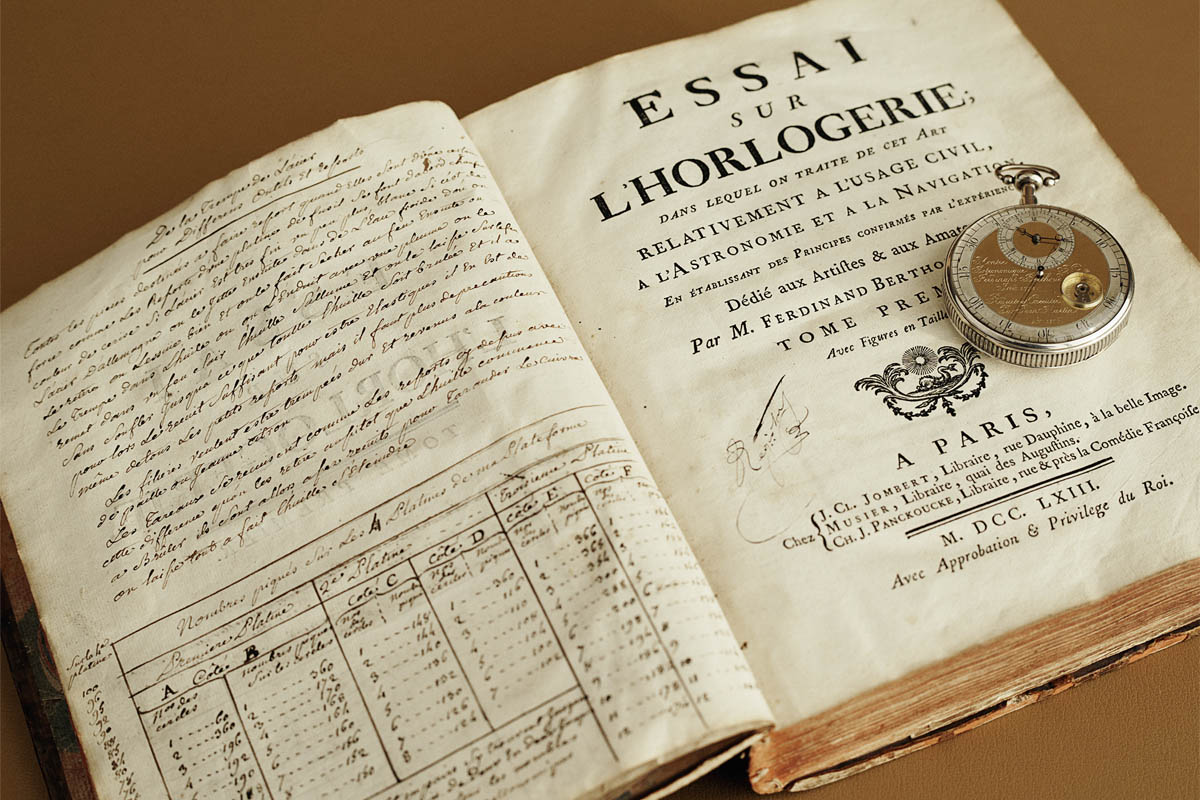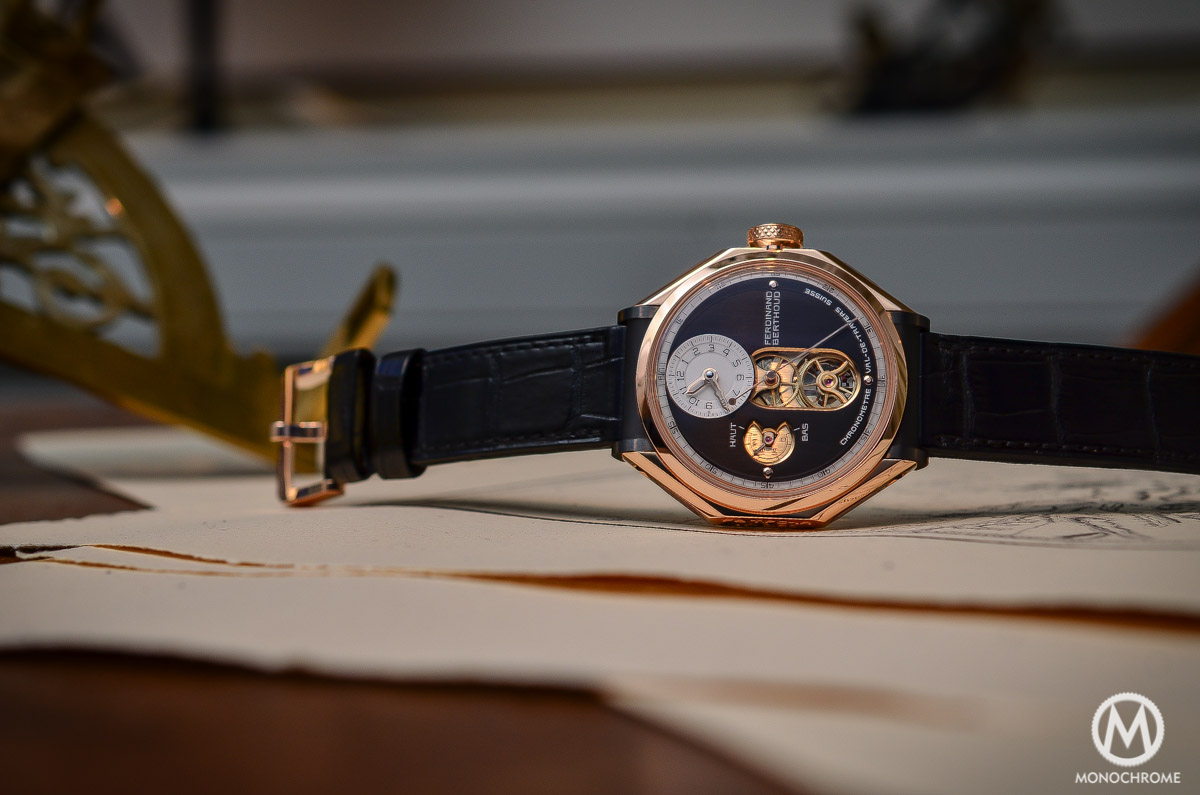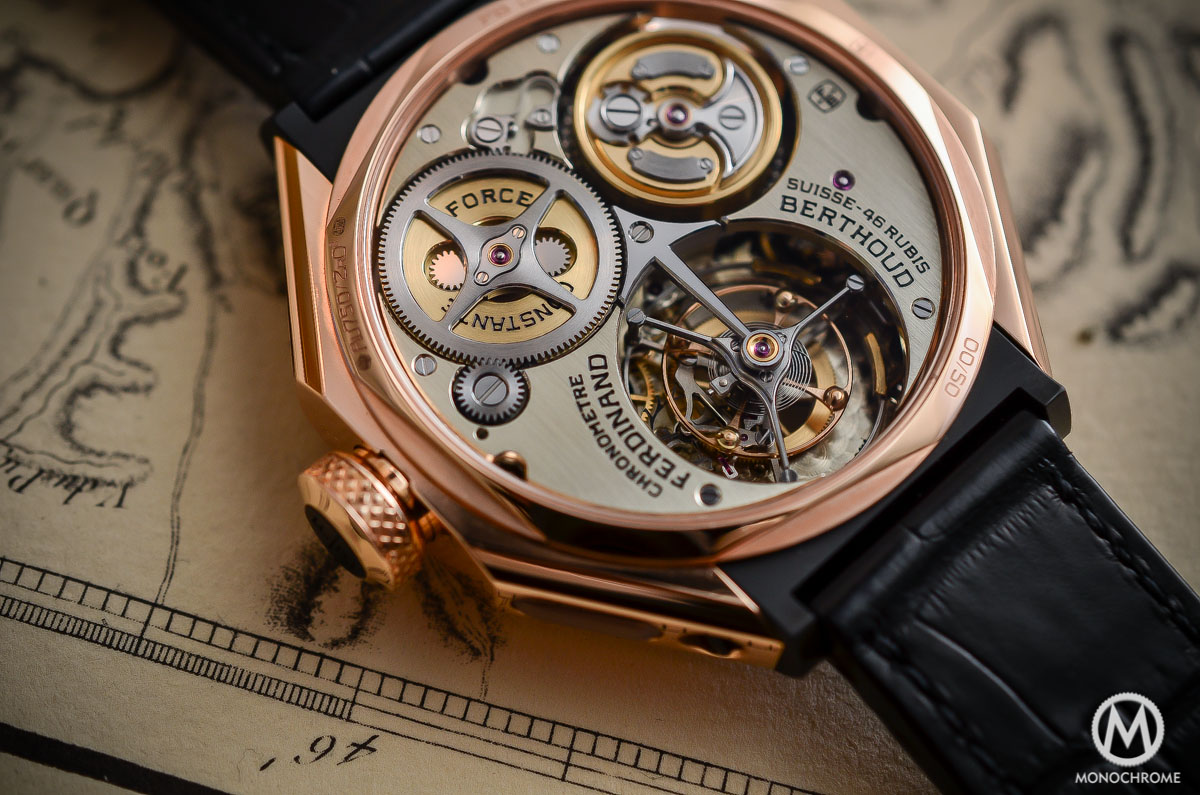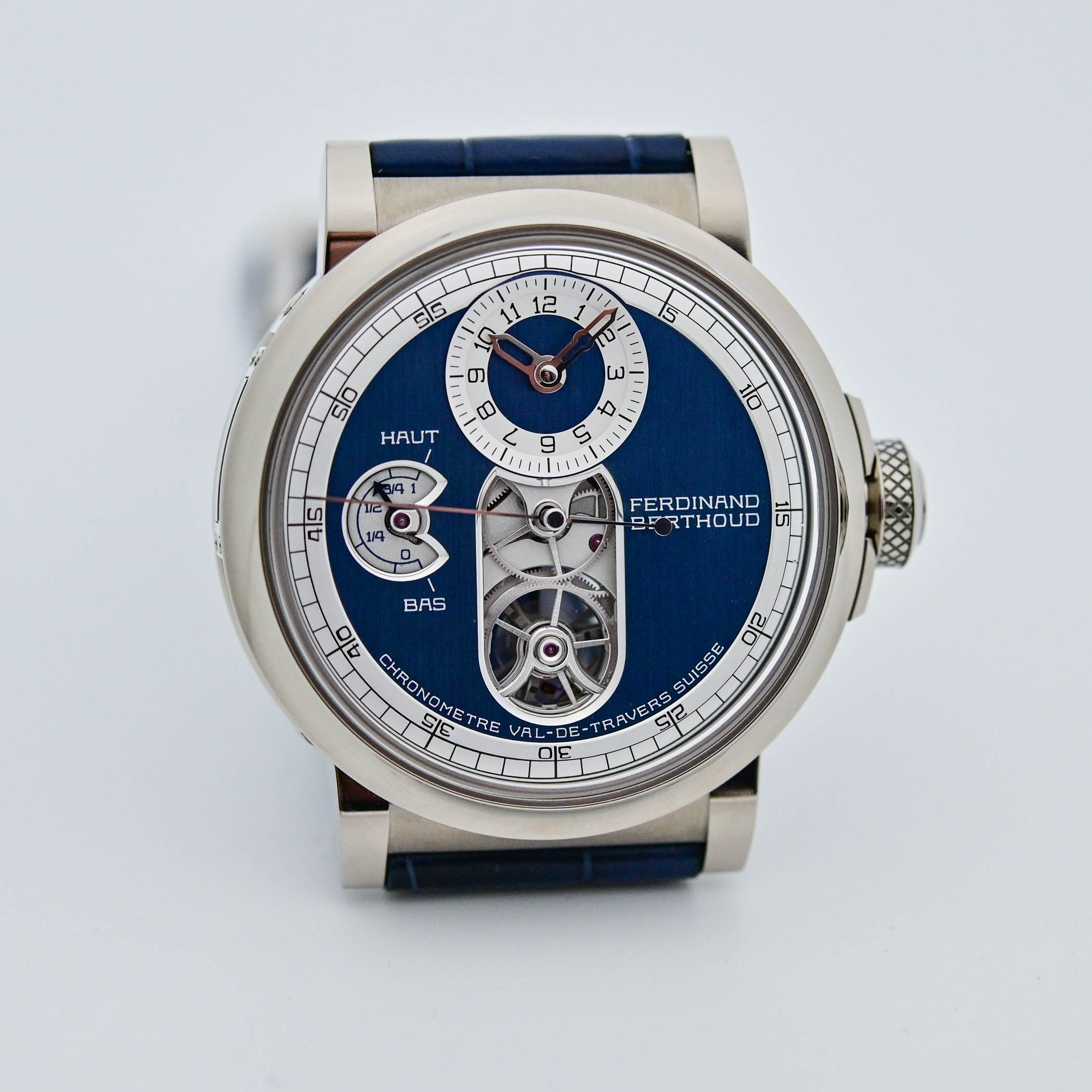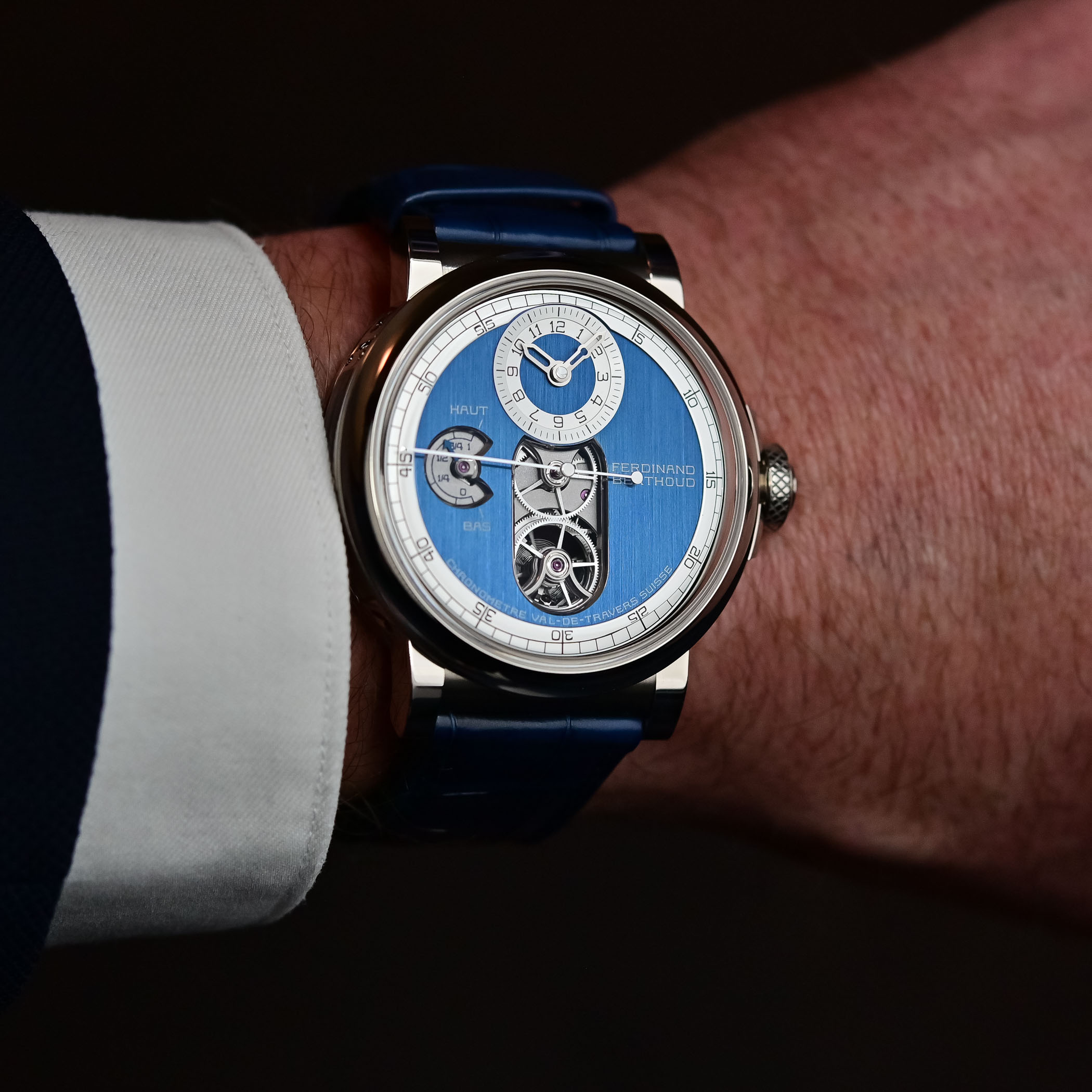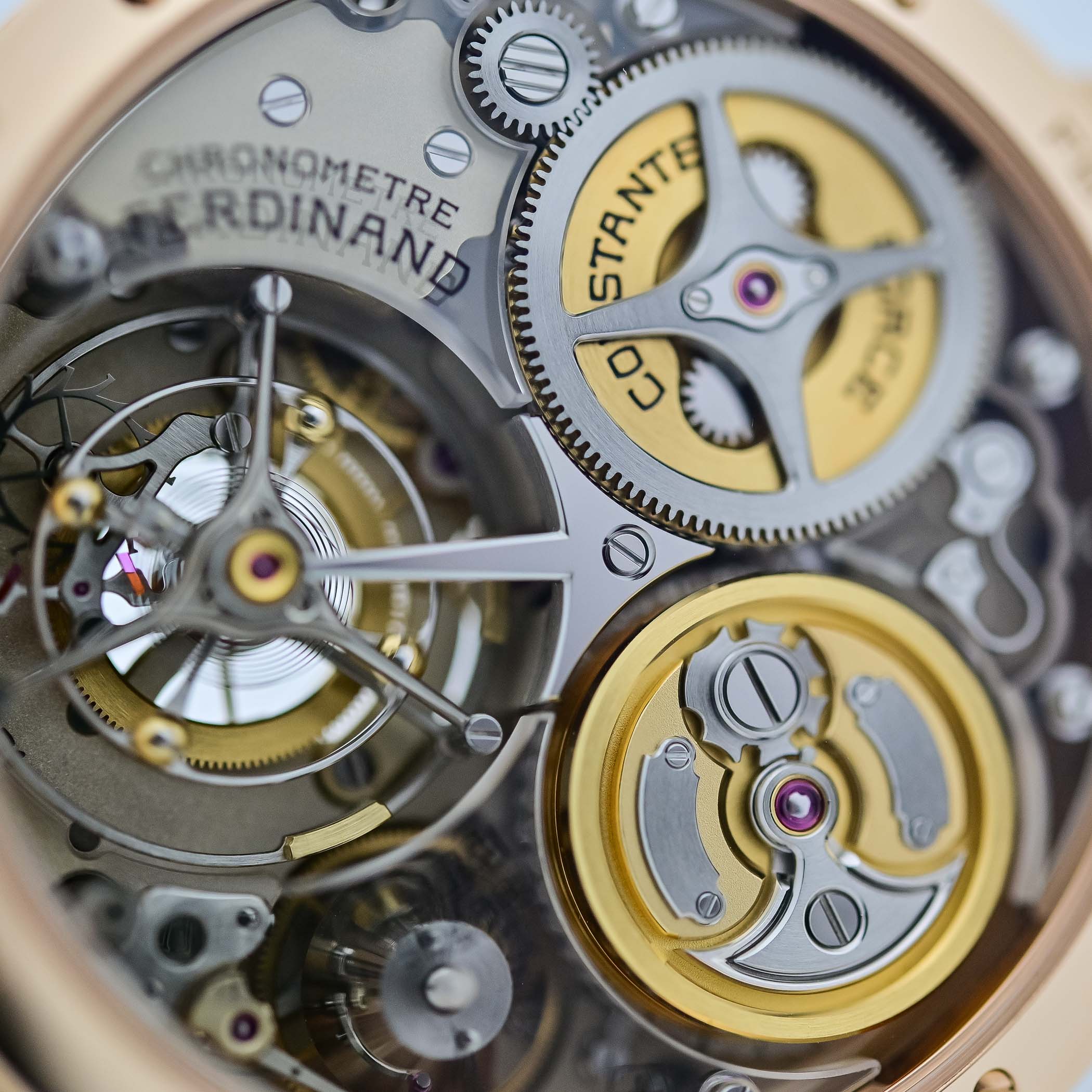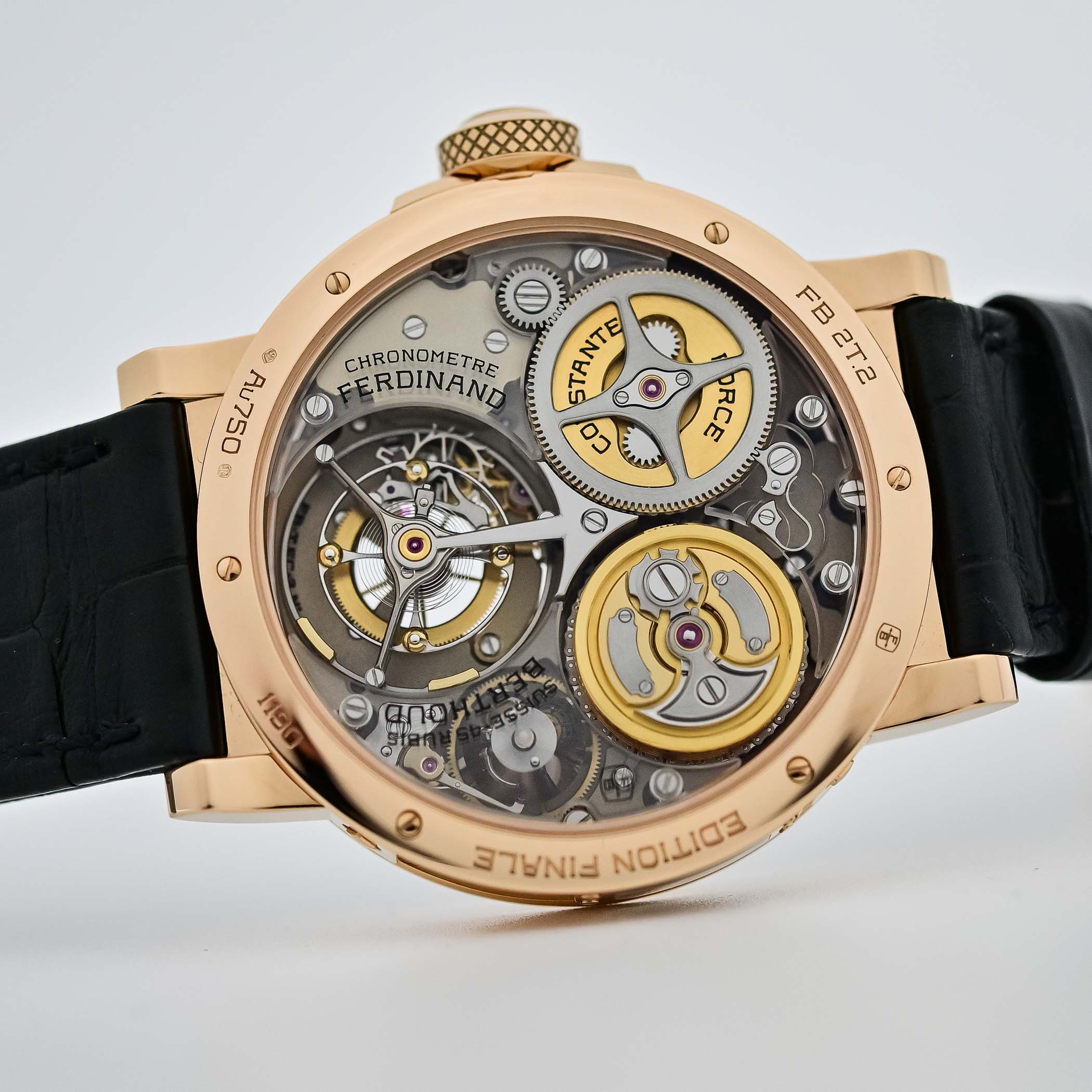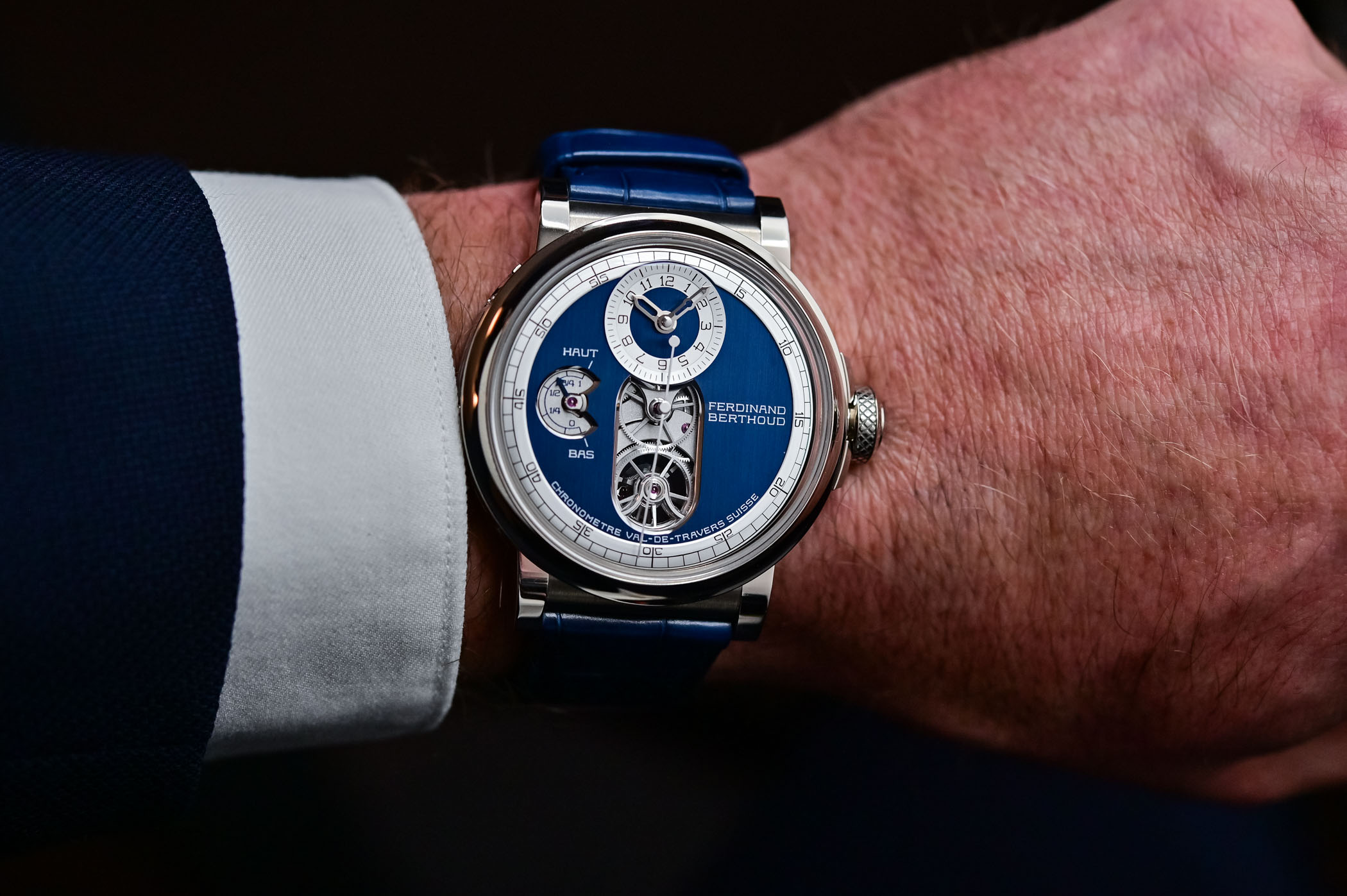The Final Act Of The Ferdinand Berthoud Chronomètre FB 2T (With Video)
Ferdinand Berthoud bids a fond farewell to its impressive calibre powering the Chronomètre FB in a round case.
Ferdinand Berthoud stages the swan song of its impressive calibre FB-T.FC. that made its debut in 2015 on board the FB1. Inspired by Ferdinand Berthoud’s historical marine chronometers, the fascinating tourbillon movement with fusée-and-chain transmission took home the top prize at the Grand Prix d’Horlogerie de Genève in 2016 and has secured the brand a firm footing in the Haute Horlogerie arena. Respecting the original dial configuration of the FB 1 and powered by the same movement, the final act of the Chronomètre FB, composed of 38 customisable pieces, exchanges its octagonal hull for a round case.
Enlightened Times
Ferdinand Berthoud (1727-1807) emigrated from Switzerland to Paris in 1745 at the age of 18. It was an inspired location for a young man of such exceptional talent. The cradle of the Age of Enlightenment, Paris was a hotbed of intellectual and scientific inquiry. The French Academy of Sciences (Académie des Sciences 1666), founded to encourage and protect French scientific research, was at the forefront of scientific developments in Europe in the 17-18th centuries. A prolific writer, original thinker and avid experimenter, Ferdinand Berthoud was a frequent visitor of the Academy, submitting patents for his inventions and contributing a large number of horological articles to the Encylopédie, the most influential publication of the Enlightenment compiled by Diderot and a team of 150 scientists and philosophers.
Longitude and chronometric accuracy were also prime candidates for Berthoud’s inquiring mind. Although the kudos went to John Harrison for his marine chronometer H4, Berthoud worked tirelessly to improve the precision and performance of longitude clocks. (Reportedly, Louis XV asked Berthoud to pop over to England and examine Harrison’s H4 Marine Timekeeper but was flatly refused by the English watchmaker.) Berthoud produced his first marine clock in 1761, duly presented to the Academy. His montres marines no. 6 and 8 enabled the measurement of longitude to less than half a degree and passed their seafaring test with flying colours. Berthoud’s Marine Clock No. 8, which accompanied the Count of Fleurieu on his 18-month voyage from Rochefort to Santo Domingo and back, had a regulator-type display with separate indications for the minutes, hours and seconds driven by a vertical movement and regulated by a thermo-compensated balance spring. The King was impressed, and in 1770, he was appointed ‘Horologist Mechanic to the King and to the Navy’ and received a commission for 20 longitude clocks for the French admiralty.
Karl-Friedrich Scheufele, co-president of Chopard, fulfilled one of his dreams following his acquisition of the name Ferdinand Berthoud in 2006. A devotee of Berthoud’s works, Scheufele had also purchased the montre marine no. 6 (1777), now on display in the Chopard L.U.CEUM museum. Unlike a few contemporary brands that alight upon a historical name to prop up products that have nothing to do with the name, Scheufele was determined to perpetuate the legacy of Berthoud’s past glories, respecting the original spirit, ingenuity and craftsmanship a full 208 years after his death – with a contemporary twist. A niche brand targeting collectors, Scheufele’s first watch for the fledgling brand in 2015 was the Chronomètre FB 1, powered by a chronometer-certified manufacture movement with a tourbillon and fusée-and-chain transmission based on an old-school pillar construction. Providing the base movement for other models, the FB-T.FC movement consolidated the identity of the brand.
The first…
The Chronomètre FB1 (which you can see in the photos above) was conceived to pay homage to the mechanical prowess and precision of Berthoud’s marine chronometers. Inspired by the architecture of Ferdinand Berthoud’s marine chronometers, in particular, their gimbal suspension allowing onboard chronometers to maintain a horizontal position, the large 44mm case was octagonal. Like the watertight portholes found on ships, four sapphire windows on the caseband introduced light and offered an engaging view of the movement. Since the movement is identical, we will cover its specifications with the latest and last models of the FB-T.FC.
The Last…
The curtain call of this movement is staged inside a round case similar to the one housing the Chronomètre FB 2RE. Still measuring a formidable 44mm across with a thickness of 14.30mm, the new hull will be available in ethical 18k rose or white gold. Collectors of the final 38 pieces can choose the case material, the colour and finishing of the dial and the leather strap. Obviously, the round-shaped case cannot be altered.
While some might miss the angular personality of earlier FB 1s, others might celebrate this round version as an easier-to-wear option – I certainly adhere to the latter. As they say, you win some and lose some, and instead of the four portholes featured on the octagonal case, the round case has only been fitted with one on the left case flank. However, take heart because there are now more sapphire viewing panes on the reverse side of the watch, but we’ll get to that later. With the new case shape, the lugs are now ostensibly riveted to the round case middle and appear more prominently than in the octagonal case that engulfed them.
Another feature you might have noticed is the incorporation of flat crown guards – also bolted – around the large (9mm) 18k gold crown with a new black ceramic medallion in its centre. Seventy turns of the crown fully arm the mainspring, but to protect the movement from over-winding, the crown is equipped with a decoupling safety device. If the tension exceeds permitted parameters, the dynamometric spring hidden inside the crown disengages, preventing the crown from driving the winding pinion.
Regulator Dial
As you can see, the layout of the dial is identical to the FB 1 and echoes that of historical marine chronometers with its off-centred hour and minutes sub-dial at noon and its extra-long central seconds hand sweeping majestically – no stuttering – over the dial to alight on the peripheral railway track with numerals at 5-second intervals separated by a line. The recessed power reserve indicator is still at 9 o’clock, and the elongated oblong aperture on the dial, stretching from the base of the hour and minutes sub-dial to the marker at 6 o’clock, reveals the 1-minute, slow-beating tourbillon surmounted by the single co-axial fourth wheel driving the central seconds hand; meaning that the seconds hand is drivedn directly by the tourbillon, not by a gear train. The recessed power reserve indicator is engraved on the mainplate of the movement and graphically indicated by somewhat unnecessary ‘Haut’ and ‘Bas’ labels in the same font as the brand name, manufacture location and chronometry printings on the dial.
Obviously, depending on the dial colour selected, the furnishings on the dial vary. Although it can be customised, the three references come in white gold with a blue CVD dial and white gold hands, in pink gold with a black rhodium dial and pink gold hands, and in pink gold with a grey ruthenium dial and blue CVD hands. On all editions, the sub-dial and seconds track are silver-toned with black varnished inscriptions.
Mechanical vistas
The reverse of the watch also has a surprise in store for collectors and now features three sapphire bridges replacing the German silver bridges, also featured on the Chronomètre FB 1.4-3. The incorporation of hand-bevelled transparent bridges increases the viewing pleasure no end and makes up for the absence (just one) of portholes on the case flanks. With 1,134 components, the manual-winding, pillar-based, chronometer-certified construction of the movement is symmetrical, revealing the large fusée-and-chain transmission and the tourbillon. With its low-frequency reversed tourbillon with direct-dive seconds and constant-force regulation via a suspended fusée-and-chain transmission system, the movement is a showcase of horological bravado with finishings to match.
going, going, gone
The final act of the Chronomètre FB 2T offers impressive horological content and does justice to the heavyweight name behind the brand. Its round case shape makes it more wearable, and the customisation options mean that 38 lucky collectors will have a unique time capsule on their wrists. While the watch references certain aspects of Ferdinand Berthoud’s marine clocks, the exposed tourbillon and fourth wheel on the dial and the explicit view of the mechanics on the caseback offer will satisfy contemporary collectors.
As you can imagine, the price depends upon the customisation options but don’t expect to pay less than CHF 255,000. For more information, please consult ferdinandberthoud.ch.

